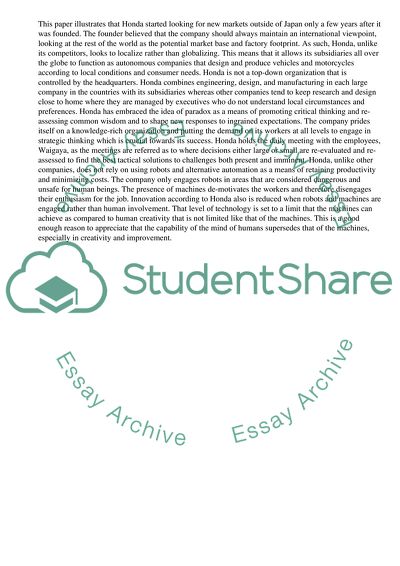Cite this document
(“Business and Corporate Level Strategies for Honda Motors Company Assignment - 4”, n.d.)
Retrieved from https://studentshare.org/business/1664874-business-level-and-corporate-level-strategies
Retrieved from https://studentshare.org/business/1664874-business-level-and-corporate-level-strategies
(Business and Corporate Level Strategies for Honda Motors Company Assignment - 4)
https://studentshare.org/business/1664874-business-level-and-corporate-level-strategies.
https://studentshare.org/business/1664874-business-level-and-corporate-level-strategies.
“Business and Corporate Level Strategies for Honda Motors Company Assignment - 4”, n.d. https://studentshare.org/business/1664874-business-level-and-corporate-level-strategies.


